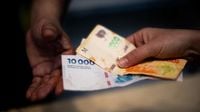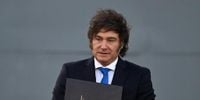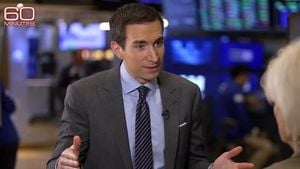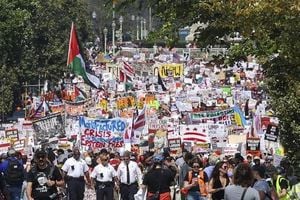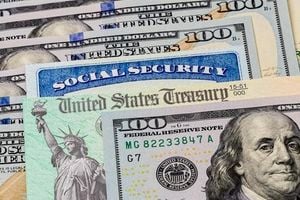Argentina, a nation renowned for tango, football, and a history of economic turbulence, is once again at the center of global financial headlines. On October 9, 2025, U.S. Treasury Secretary Scott Bessent announced a sweeping $20 billion rescue plan designed to stabilize Argentina’s battered economy and support President Javier Milei’s embattled government. The plan, which includes rare direct purchases of Argentine pesos and a currency swap arrangement, is as much a geopolitical maneuver as it is an economic one—drawing both applause and sharp criticism at home and abroad.
President Javier Milei, often described as a “Trump-like” libertarian, swept into office promising to break Argentina’s cycle of inflation and default. His approach? A radical blend of austerity, deregulation, and a chainsaw—literally and figuratively—taken to the nation’s budget. Since his election, Milei has slashed public spending, aiming for fiscal surplus and investor confidence. According to Bloomberg, Argentina posted its first budget surpluses since 2009 and has managed to bring inflation down to around 30%, a dramatic improvement from peaks nearly ten times higher.
Yet, the road has been anything but smooth. After Milei’s party suffered a stinging defeat in a key provincial election, the peso entered a nosedive, threatening to send inflation soaring just weeks before crucial midterm elections on October 27. The government burned through $1.8 billion in reserves in a desperate bid to prop up the currency before the U.S. stepped in. As CNN reported, Bessent confirmed that the United States “directly” purchased Argentine pesos—a move with few precedents in recent decades—and committed to a currency swap line allowing Argentina’s central bank to exchange pesos for U.S. dollars.
Bessent was quick to defend the bold intervention. “It’s not a bailout at all,” he told Fox News, emphasizing that the U.S. Treasury is prepared to take “whatever exceptional measures are warranted to provide stability to markets.” He added on social media, “Argentina faces a moment of acute illiquidity. The international community—including the IMF—is unified behind Argentina and its prudent fiscal strategy, but only the United States can act swiftly.”
But to many observers, the plan looks very much like a bailout—delivered by an administration that has long championed an “America First” agenda. This apparent contradiction hasn’t gone unnoticed. Senator Elizabeth Warren has introduced legislation seeking to block the Treasury from using its stabilization fund for the rescue, arguing that taxpayer dollars should prioritize domestic needs. Meanwhile, U.S. soybean farmers, whose exports compete with Argentina’s in China, have voiced concerns that the plan could inadvertently undermine their interests.
“It’s a gamble that all the problems that Argentina now faces are a function of politics, that Milei can pull a rabbit out of the hat and do better than expected in the October elections,” Brad Setser, a former Treasury official now at the Council on Foreign Relations, told Bloomberg. However, Setser and others warn that underlying structural issues—such as the peso’s overvaluation and persistent debt—may not be so easily solved, even with a supportive U.S. administration and a possible congressional majority for Milei.
The details of the U.S. intervention are still coming into focus. Bessent has signaled that the Treasury’s Exchange Stabilization Fund may be deployed, possibly including Special Drawing Rights (SDRs) from the International Monetary Fund. Argentina is currently the IMF’s largest borrower, owing $55 billion—a legacy of previous bailouts that have repeatedly turned sour, most infamously in 2001 when a crash triggered widespread unrest. The IMF agreed to extend more support in April, but only after internal debate and with no new cash expected at the lender’s annual meetings next week.
Amidst these financial machinations, geopolitics looms large. The Trump administration’s initiative is not just about rescuing Argentina’s economy; it’s also about countering China’s growing influence in Latin America. Argentina maintains an $18 billion swap line with China’s central bank, renewed under Milei’s government. Bessent has made it clear: “We do not want another failed or China-led state in Latin America.” The U.S. has offered carrots—like the rescue package and a push to include Argentina in the Visa Waiver Program, a process kicked off by Homeland Security Secretary Kristi Noem’s visit to Buenos Aires—as well as sticks, such as tariffs and military threats against other Beijing allies in the region.
The rescue plan arrives at a politically fraught moment in Washington as well. With the U.S. government facing a fiscal standoff and operations partially frozen, critics question the wisdom of committing billions abroad while domestic priorities go unfunded. “It’s a bet that the U.S. political system will be comfortable putting money into Argentina, when the U.S. government is shut down and not writing checks to Americans,” Setser observed.
For Milei, the stakes could hardly be higher. The U.S. intervention is designed to keep markets calm and the peso stable through the midterm elections, giving him a shot at consolidating power and pushing through his economic reforms. If he succeeds, Argentina could finally break its cycle of boom and bust. If not, the U.S. and its taxpayers could be left holding the bag—again.
Meanwhile, financial markets have reacted with cautious optimism. The peso rebounded and Argentine government bonds surged following the U.S. announcement, though the long-term sustainability of this rally remains in question. As Barclays economist Ivan Stambulsky put it, “There is broad agreement that the FX regime must change,” suggesting that the peso will eventually need to float more freely—a risky move before elections, but perhaps inevitable afterward.
Looking ahead, more details about the rescue plan may emerge when Milei visits President Donald Trump at the White House next week. The meeting is expected to cement the partnership between the two leaders and clarify the U.S. commitment to Argentina’s economic future.
In a region where superpower rivalries are intensifying and economic fortunes can shift overnight, the U.S.-Argentina rescue plan is a high-stakes gamble—one that could reshape not just Argentina’s trajectory, but the balance of power across the Americas. For now, all eyes are on Buenos Aires and Washington, waiting to see if this bold bet pays off.
